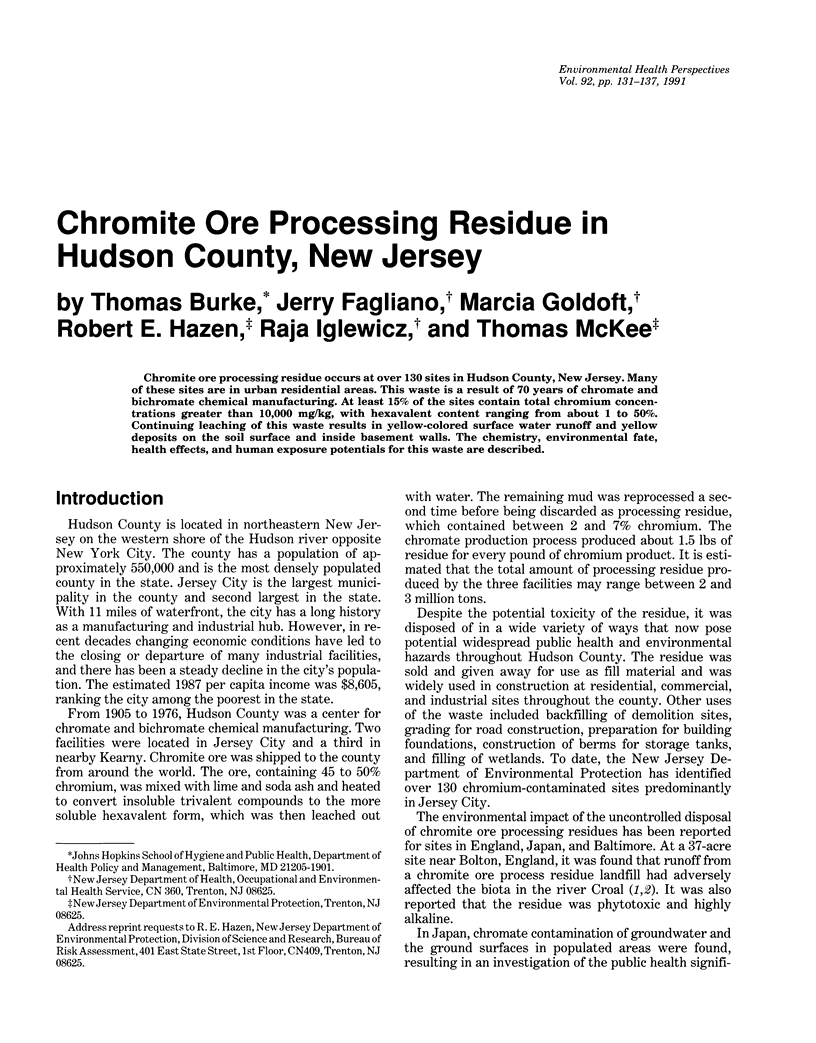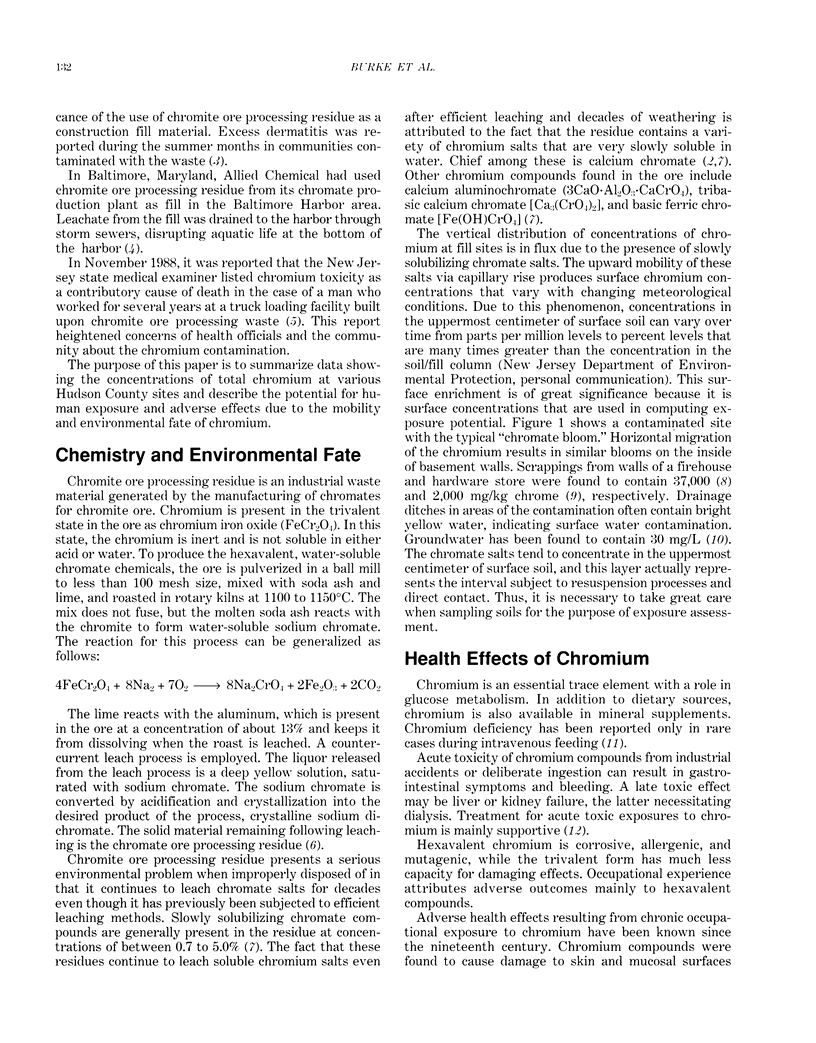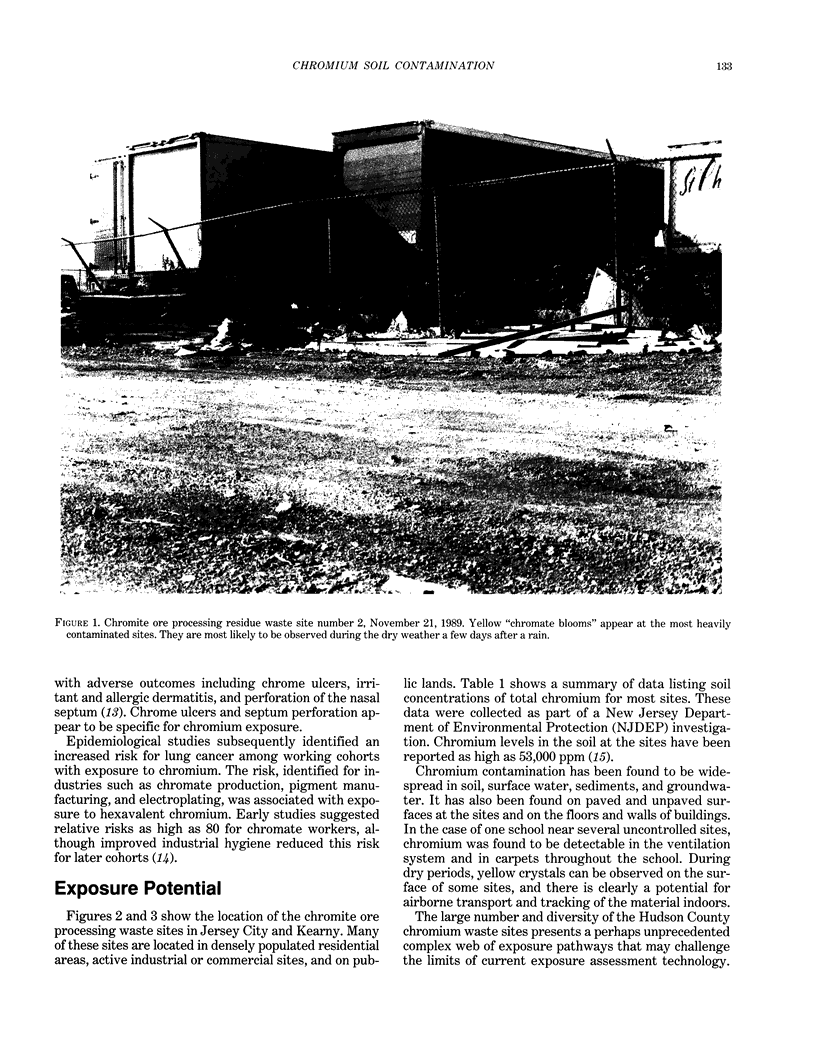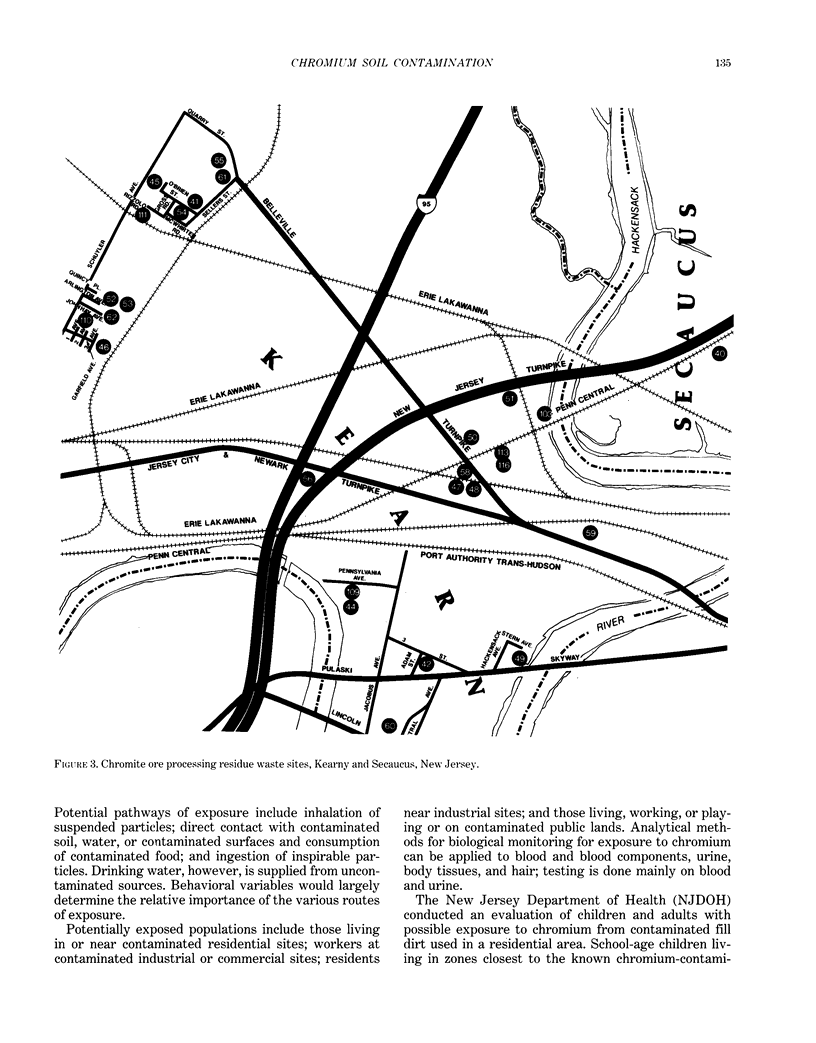Abstract
Chromite ore processing residue occurs at over 130 sites in Hudson County, New Jersey. Many of these sites are in urban residential areas. This waste is a result of 70 years of chromate and bichromate chemical manufacturing. At least 15% of the sites contain total chromium concentrations greater than 10,000 mg/kg, with hexavalent content ranging from about 1 to 50%. Continuing leaching of this waste results in yellow-colored surface water runoff and yellow deposits on the soil surface and inside basement walls. The chemistry, environmental fate, health effects, and human exposure potentials for this waste are described.
Full text
PDF






Images in this article
Selected References
These references are in PubMed. This may not be the complete list of references from this article.
- Ellis E. N., Brouhard B. H., Lynch R. E., Dawson E. B., Tisdell R., Nichols M. M., Ramirez F. Effects of hemodialysis and dimercaprol in acute dichromate poisoning. J Toxicol Clin Toxicol. 1982 May;19(3):249–258. doi: 10.3109/15563658209025729. [DOI] [PubMed] [Google Scholar]
- Langård S. One hundred years of chromium and cancer: a review of epidemiological evidence and selected case reports. Am J Ind Med. 1990;17(2):189–215. doi: 10.1002/ajim.4700170205. [DOI] [PubMed] [Google Scholar]
- Offenbacher E. G., Pi-Sunyer F. X. Chromium in human nutrition. Annu Rev Nutr. 1988;8:543–563. doi: 10.1146/annurev.nu.08.070188.002551. [DOI] [PubMed] [Google Scholar]



